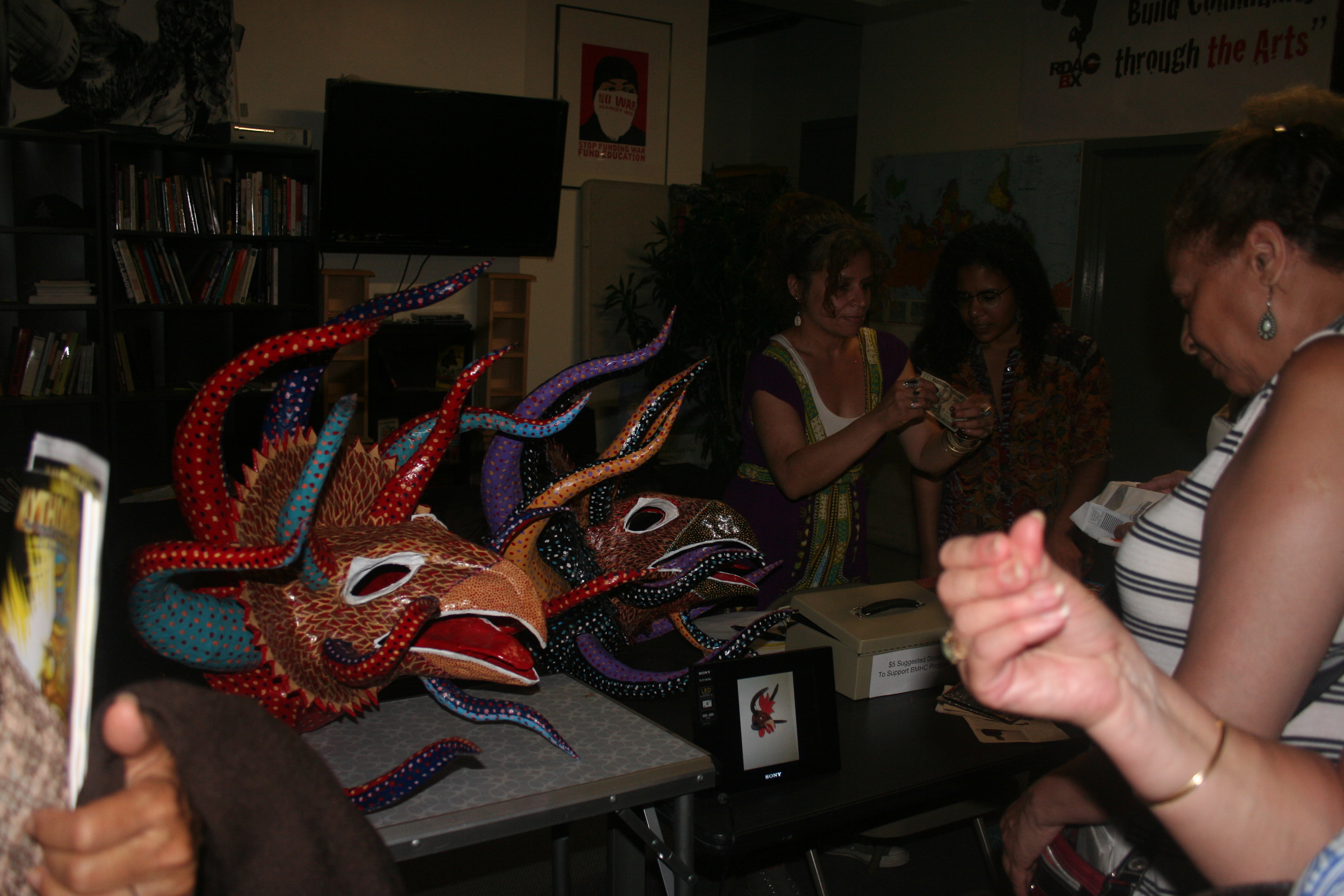
Folklorists tell tales of two island cities
Masks play a crucial role in the annual carnivals that draw paraders to the streets of Puerto Rico’s cities.
A panel of experts spoke of the importance of masks on the island, with a display of photos, the showing of a documentary, and many examples of the real thing, as part of the Caribbean Carnival series at the Bronx Music Heritage Center in Morrisania, on July 19.
Paraders wear “vejigante” masks patterned after cow bladders during Carnival in the Puerto Rican cities of Ponce and Loiza Aldea, the presenters said. In fact, the masks are so key to the event that paraders also carry inflated cow bladders that resemble the masks while taking to the streets. Vejiga, in Spanish, means bladder.
A professor of Puerto Rican art, history and culture, explained how the link between the presence of African and European culture is visible in the island’s festivals. Nestor Murray-Irizarry told the gathering that Ponce’s carnival still distinguishes between four distinct groups, the way the celebration was originally drawn up during the era of European colonialism. The ruling Spanish, the island’s Creole population, the artisans who created the costumes and decorations, and direct descendants of Africans are all represented.
“The fourth level, which was called ‘the street carnival,’ was where the African traditions were most frequently seen,” said Murray-Irizarry.
“You’re looking at 500 years of development,” added Bobby Sanabria, the Heritage Center’s curator.
Attendees saw photos of century-old festivals, in which islanders parade, wearing masks depicting animal heads and characters from traditional Spanish literature like “Don Quixote.”
New York-based mask maker, Felipe Rangel, who displayed some of his work and answered questions about the lengthy process, said he hoped the educational event would encourage Puerto Ricans far from home, along with others, to learn about the island’s rich history.
“I want people, that when they say ‘yo soy Puertorriqueño,’ to go back to the roots and start reading about that, what does it mean to be that,” he said.
An attendee from Manhattan said the event left her considering learning how to make her own masks.
“I was born in East Harlem, so I had no clue about carnival at all,” said Charisa Collazo.
Local resident Anna Amaez expected to stay briefly, but was captivated by the presentation and didn’t leave until the event ended. She had taught mask making before, but knew little about Puerto Rican mask making techniques.
“I learned the French version of it, not the Puerto Rican version,” she said. “To see the differences was very powerful.”
“To think that people are putting their hands in venom in order to create a work of art, that is dedication,” she added.

